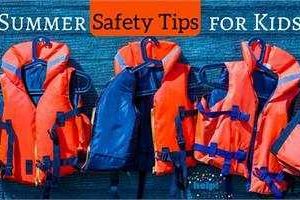
Water play and swimming are excellent ways to pass any amount of hot, sunny, summer days with kids.
Whether it’s as simple as setting up a sprinkler or kiddie pool in your yard or taking them to a splash pad or gets as intricate as a trip to the beach or cottage, water is a great friend. It can also be a huge enemy if they get hurt or can’t swim, so remember to use caution and don’t let those wee, wet, squirmy kidlets out of sight.
Some key tips to avoid water play dangers:
1. Pay close attention when kids are in or near water.
One of the most important safety tips is to always ensure there is proper supervision. Pay close attention to children at all times. A child’s voice is often quiet and the ocean, lake or pool area can be quite loud, so it may be hard to hear if they call out.
2. Make sure Ability is Understood
Swimming ability is something that shouldn’t be overestimated. Even a fully-grown adult can drown if they are not paying attention to the depth of the water or the current (in oceans). Send your kids to swimming lessons early and make sure any adults going into the water also know how to swim (or you’ll be rescuing them, and that’s no fun).
3. Be Prepared
Know the body of water you’re swimming in and the dangers associated with it. Tides, weather conditions, number of lifeguards and blind spots if you can’t see your kids you don’t know what they’re doing) can all affect the fun. Don’t forget to bring sunscreen, sunglasses, hats and cover-ups.
4. Learn CPR.
Knowing how to do CPR is one of the most important steps parents can take to keep everyone safe. In the time it takes for paramedics to arrive, your CPR skills could literally save a life.
5. Prevent ear infections.
Swimmer’s ear, is an inner-ear infection usually caused by bacteria growth, and even a small amount of trapped water can cause an infection. Common symptoms include itching, discharge, redness, ear pain and muffled hearing; see your pediatrician if your child experiences any of these symptoms post-pool.
Swimmer’s ear can usually be prevented using a homemade preventive eardrop before and after swimming. A 50-50 mixture of white vinegar and rubbing alcohol dries out the inner ear. Tilt your child’s head, pour 1 teaspoon into the ear and let it drain back out. You can also buy over-the-counter solutions at a drugstore.
Vancouver Pools and Beaches
Calgary Pools and Beaches
Ottawa Pools and Beaches
Toronto Pools and Beaches
If you want to send your kids to swimming lessons (a really great idea), we’ve also got great resources for that.
Image Credit: ?erry/Flickr




